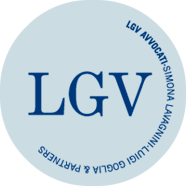ARTIFICIAL INTELLIGENCE AND INDUSTRIAL PROPERTY LAW: GRANTED IN AUSTRALIA THE FIRST PATENT ‘INVENTED’ BY A MACHINE
14/10/2021
With a groundbreaking decision of July 30, 2021 (available at https://www.judgments.fedcourt.gov.au/judgments/Judgments/fca/single/2021/2021fca0879), the Federal Court of Australia has ruled – for the first time in the world – that an artificial intelligence system can be named as the inventor of a patented invention. As a result, the owner of the AI system can legitimately be named as the patent’s applicant and enjoy the exclusive rights arising from its registration.
The case
The dispute comes from a patent application filed by Dr. Stephen Thaler, developer and owner of an artificial intelligence system called “DABUS”, able to generate ideas by modifying the interconnections between different neural networks and to analyse the most critical consequences of such ideas. According to Thaler himself, DABUS developed entirely on its own the invention underlying the patent application, relating to a heterogeneous set of products and processes concerning containers, devices and methods for attracting enhanced attention using convex and concave fractal elements.
The patent application, filed by Dr. Thaler (among others) with the Australian Patent Office, did not name a natural person as the inventor, but “DABUS”. For that reason, the Office rejected the application on the ground that the applicable legislation was not compatible with the possibility of designating a non-natural person as the inventor of the patent. Dr. Thaler appealed this decision before the Australian Federal Court.
The decision
With the commented decision, the Australian Court, while confirming that the applicant for a patent registration must necessarily be a natural person (or a person with legal personality), excluded the existence of a valid legal ground to prevent an artificial intelligence system from being named as the inventor of the patent.
This is because, in the first place, there is no definition of inventor in the Australian legal context that unequivocally links that status to a natural person: in the Court’s view, the term ‘invent’ has been used to describe actions directly attributable to men only because – historically – such actions could not (yet) be performed by machines: ‘however, now that artificial intelligence systems can perform the same functions, the word [invent] can also refer to them‘.
Secondly, the Court continues, the argument put forward by the Australian Patent Office according to which an AI system could not be identified as an inventor because – being it an artificial intelligence system – it could not be considered as the owner of a title to be transferred to the applicant-physical person (in this case Dr. Thaler), cannot be accepted. In fact, Art. 15(1)(c) of the Patents Act 1990, in providing that “a patent for an invention may only be granted to a person who [… ] derives title to the inventor or a person mentioned in paragraph (b)“, when it refers to “deriving title to the inventor”, would not necessarily require an act of assignment from the inventor/AI system to the applicant/individual, since the applicant, in his capacity as owner of the AI system, would be the owner of all inventions created by that system at the very moment those inventions came into his possession.
Finally, in conclusion of its reasoning, the Court points out that extending the definition of inventor in a way of including an AI system not only wouldn’t be contrary to the applicable legislation, but would also be in line with the objective set in section 2A of the Patents Act to promote technological innovation and its dissemination: otherwise, a disincentive for investments would be generated and owners of AI systems would be forced to protect patentable inventions as trade secrets.
Conclusions
The Australian decision, which is not yet definitive being it subject to appeal, could mark a turning point in the global panorama with regard to the increasingly discussed and topical issue of the relationship between artificial intelligence and industrial property law. For the time being, however, this is an almost isolated case which, in fact, appears to be in contrast with some other decisions (most recently the one of the Court of Appeal of England rendered on September 21, 2021, available at https://iponline.cipc.co.za/Publications/PublishedJournals/E_Journal_July%202021%20Part%202.pdf), which in front of similar cases, confirm that the status of inventor of a patent can only be attributed to a natural person.
Giorgio Rapaccini
